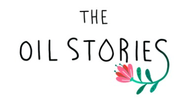What are essential oils? What is aromatherapy?
Essential Oils vs Carrier Oils: What’s the Difference?
Plants can give us two kinds of oils:
🌿 Essential oils – highly concentrated, aromatic, and volatile (they evaporate quickly).
🥥 Carrier oils – fatty, greasy, and nourishing (like coconut, almond, or olive oil).
Think of it this way: carriers = the “base” that nourishes your skin, essentials = the “scent + soul” of the plant.
👉 Carrier oils are safe to use directly on the skin. Essential oils? Too potent to apply neat — always dilute them in a carrier first.
👉 And yes, essential oils are generally much pricier than carriers because of how little oil plants yield.
A Dash of History
Aromatic plants aren’t a new TikTok trend. They’ve been medicine, ritual, and treasure for thousands of years.
✨ Egypt – Myrrh was used for hay fever. Tutankhamun’s tomb (1922) had jars of frankincense and myrrh.
✨ India – Aromatics remain central in Ayurveda.
✨ Tibet – Prescriptions often mixed cardamom, sandalwood, clove, and myrrh.
✨ Greece – Hippocrates recommended aromatics for plague prevention.
✨ Europe – Glovemakers who scented their wares with oils reportedly survived the Great Plague.
Fast forward:
💊 Aspirin = inspired by willow bark.
💜 Lavender healed chemist René-Maurice Gattefossé’s burn in 1928 — giving birth to modern aromatherapy.
So, What Is Aromatherapy?
Not just spa massages or “smelling nice.”
Aromatherapy is a science.
It uses essential oils through inhalation, topical blends, or other methods to support physical, emotional, and mental health.
Important point: essential oils work best as a whole plant extract, not broken into single molecules. Just like water isn’t the same as its hydrogen + oxygen parts, oils lose magic when reduced to “actives” only.
How Essential Oils Are Made
Early on, plants were steeped in fats or water (ever watched Perfume: The Story of a Murderer?).
Today, common methods include:
-
Steam Distillation – the classic go-to.
-
Cold Pressing – mainly for citrus fruits.
-
Solvent Extraction – for delicate blooms like rose and jasmine.
-
CO₂ Extraction – high-tech, expensive, but preserves aroma beautifully.
Fun fact: “Essential oil” comes from “quintessence” — the “soul” of the plant. 💫
Final Note
If you made it this far, your focus is solid. If not… try inhaling some rosemary oil next time you study. It’s known for boosting concentration.
Until next time,
Daniela
